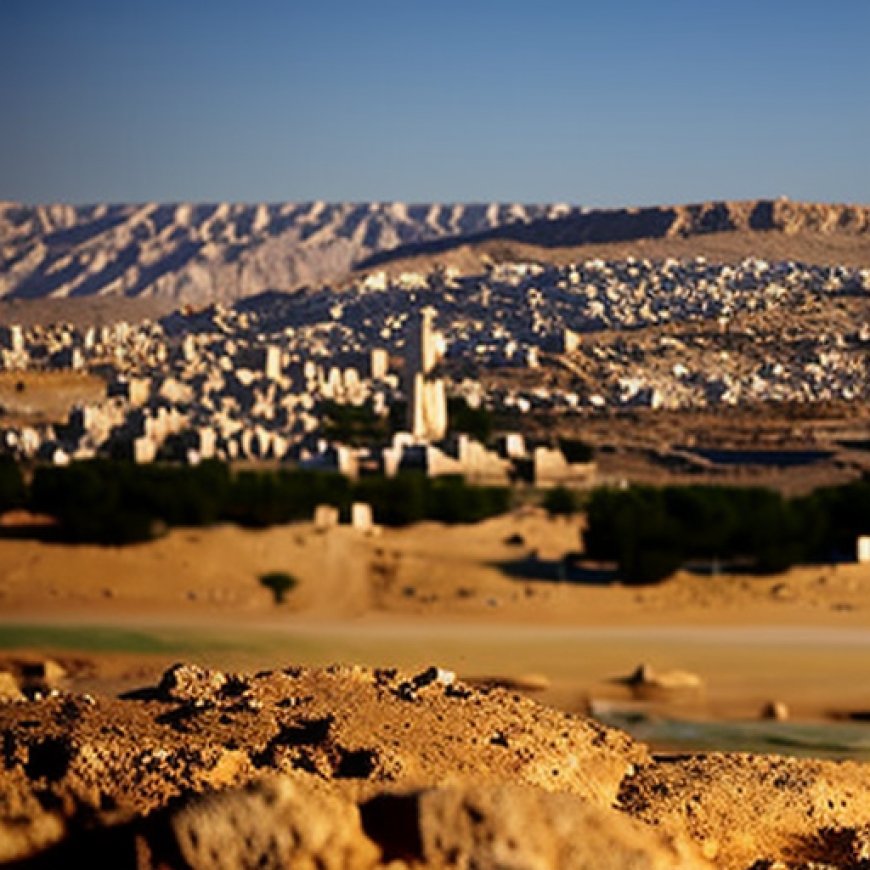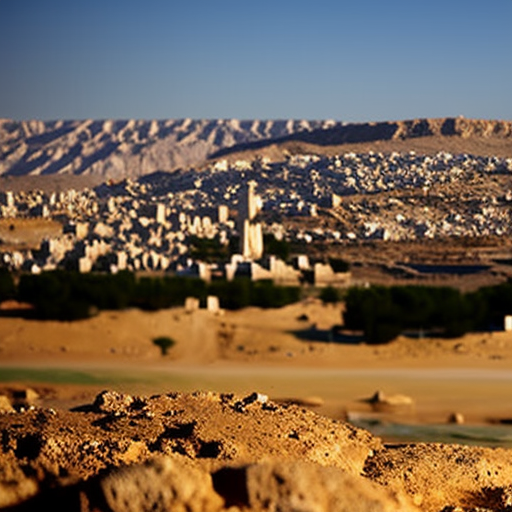Palestine: How western aid enables Israel’s colonialism
Palestine: How western aid enables Israel's colonialism Middle East Eye


International Aid in the Occupied Palestinian Territory: A Report on the Oslo Development Model
Since the Oslo I Accord was signed in 1993, international donors have expended more than $50bn in foreign aid in the Occupied Palestinian Territory (OPT). That funding has been channelled through a western development model that was designed, at least on the surface, to foster Palestinian economic and institutional development.
The western architects of that model had hoped that if they could “catch the Palestinians up” to Israel developmentally then peace could take hold once two liberal democratic Israeli and Palestinian states existed next to each other in the Levant.
But the model explicitly ignored the colonial nature of Israel’s rule – the inherent devastation caused by rapacious colonial structures of control – and put the onus of peace-building on the backs of the Palestinians, requiring them to change to meet nebulous standards of development defined by Israel’s closest western allies before peace would be allowed to take hold.
Yet, the funding was accepted in goodwill by the Palestinians who put their faith in the Oslo Peace Process to lead them to freedom while using donor funding as an opportunity to establish their own institutions after decades of direct Israeli rule. The Palestinians’ ultimate aim was to establish their own state and be free once the US-sponsored Oslo process passed through a “transitional period” that was not to exceed five years, concluding as early as 1999.
Stay informed with MEE’s newsletters
Sign up to get the latest alerts, insights and analysis,
starting with Turkey Unpacked
That aid was key to the (colonial) logic of the western model, used as a tool to reform (read: civilise) the Palestinians and support them through a transitional period of Israeli rule, to reach a point where they could sustain themselves independently in peace next to Israel.
No closer to freedom
Though the funding was used to establish a semi-autonomous Palestinian Authority (PA) and limited Palestinian institutions of self-rule, like in health and education, neither Oslo aid nor the Oslo process brought Palestinians any closer to freedom and self-determination.
It never allowed them to build an economy to support them in their struggle against the occupying power that is colonising and removing them from the majority of their remaining land (roughly 22 percent of historic Palestine).
The funding was used almost immediately to compensate for economic losses imposed on the Palestinians through punitive Israeli policies
Instead, that funding was used almost immediately to compensate for economic losses imposed on the Palestinians through punitive Israeli policies like closure, settlement building, and restrictions on trade.
Aid became a lifeline to the OPT when the peace process descended into extreme violence during the Second Intifada from 2000 to 2006.
Western policymakers then updated their development model, focusing on the Palestinian security sector. Their view was that if the PA could coordinate with Israel and provide it security by reigning in “violence” by Palestinian armed factions then renewed peace efforts could get underway.
Once more, the onus for reform and peace was placed squarely on the Palestinians, based again on an underlying and racist colonial assumption that it is they who are most prone to violence, unlike liberal-democratic Israel.
Western policymakers and developmentalists renewed their work on redesigning other aspects of Palestinian institutions and society. The new model incorporated notions of aid effectiveness, good governance, and transparency that became popular in the aid sector during the 2000s in response to the devastation caused by neoliberal (and neocolonial) aid systems that existed during the “lost decade” of the 1980s and Washington Consensus in the 1990s.
Many well-intentioned developmentalists invested significant time and resources into making the updated Oslo development model work, and it was “so successful” that even the World Bank felt that the Palestinians were ready by 2011 to run their own state.
However, in 2023, Palestinians are even further away from self-rule than 12 years before.
Four approaches
For more than a decade I have been tracking aid with my colleague, Dr Jeremy Wildeman. There are differing perspectives on why the Oslo-aid-for-peace models failed so abjectly after 30 years and $50bn of funding. That includes some perspectives that it has not necessarily been a failure. For instance, there are the aid instrumentalists who believe the Oslo model was, and is, inherently sound but that it was the externality of “politics” that got in the way of it succeeding.
Neocolonialists, by contrast, are aid realists who understand how aid can be wielded as a tool to successfully discipline, silence, and maintain control over Palestinians, and support the status quo of Israeli and western interests.
Then there are the “critical instrumentalists” who share the instrumentalist’s faith in the Oslo aid model, but, in contrast, focus on the politics of the Israeli military occupation of the OPT, Palestinian human rights, Israeli settlement building, and international law, as primary obstacles that need to be addressed, for development and peace to take place.
Finally, there are the critics who, like ourselves, do not believe the aid model is a liberating process but rather a non-indigenous tool of external domination that needs to be viewed with suspicion and ultimately resisted.
Principles of aid effectiveness, like those found in the Paris Declaration in 2005 and Accra Agenda for Action in 2008, can be used as an anti-colonial device to assess how western donors are operating in regions of the Global South, like the OPT.
One of the most important principles is that donors be transparent and have information freely available about what they are spending their funding on. This is because it is fundamental for any sovereign people to comprehensively understand what foreign funding is entering their society and towards what end it is being spent, in each donor’s interest.
It is also a maxim of good governance and the liberal institutionalism donors purport to be developing for Palestinians, to transparently show where funding is coming from and how it is being used by their government.
Tracking Palestinian aid
Dr Wildeman and I have attempted, on multiple occasions since 2016, to track donor funding in the OPT.
The overarching aim of our work has been to track and analyse that aid and to build a comprehensive, publicly accessible database of all aid flows. Making meaningful information accessible is a critical and crucial step towards systems of democratic good governance that Palestinians yearn to fulfil, on the path towards autonomous rule.
SDGs, Targets, and Indicators
1. SDGs Addressed or Connected to the Issues Highlighted in the Article:
- SDG 16: Peace, Justice, and Strong Institutions
- SDG 17: Partnerships for the Goals
2. Specific Targets under Those SDGs Based on the Article’s Content:
- SDG 16.7: Ensure responsive, inclusive, participatory, and representative decision-making at all levels
- SDG 17.3: Mobilize additional financial resources for developing countries from multiple sources
3. Indicators Mentioned or Implied in the Article:
- Transparency of aid spending
- Availability of information on aid funding
- Accessibility of data on aid flows
Table: SDGs, Targets, and Indicators
| SDGs | Targets | Indicators |
|---|---|---|
| SDG 16: Peace, Justice, and Strong Institutions | Target 16.7: Ensure responsive, inclusive, participatory, and representative decision-making at all levels | – Transparency of aid spending – Availability of information on aid funding – Accessibility of data on aid flows |
| SDG 17: Partnerships for the Goals | Target 17.3: Mobilize additional financial resources for developing countries from multiple sources | – Transparency of aid spending – Availability of information on aid funding – Accessibility of data on aid flows |
Analysis and Explanation:
1. SDGs Addressed or Connected to the Issues Highlighted in the Article:
The issues highlighted in the article are connected to SDG 16: Peace, Justice, and Strong Institutions, as well as SDG 17: Partnerships for the Goals. The article discusses the failure of the western aid model in promoting peace and self-determination for Palestinians, and the need for transparent and accountable partnerships between donors and Palestine to address the root causes of the conflict.
2. Specific Targets under Those SDGs Based on the Article’s Content:
Based on the article’s content, the specific targets that can be identified are:
- SDG 16.7: Ensure responsive, inclusive, participatory, and representative decision-making at all levels. This target is relevant because it highlights the need for Palestinians to have a say in their own governance and decision-making processes, including the management of aid funds.
- SDG 17.3: Mobilize additional financial resources for developing countries from multiple sources. This target is relevant because it emphasizes the importance of diversifying funding sources for Palestine and reducing dependence on a single donor or aid model.
3. Indicators Mentioned or Implied in the Article:
The article mentions or implies several indicators that can be used to measure progress towards the identified targets:
- Transparency of aid spending: This indicator refers to the extent to which donors provide detailed information about how their aid funds are being spent in Palestine.
- Availability of information on aid funding: This indicator relates to the accessibility of information about the sources and purposes of aid funding in Palestine.
- Accessibility of data on aid flows: This indicator measures the ease of access to data on the flow of aid funds into Palestine, including the amount, timing, and intended beneficiaries.
These indicators are crucial for assessing the effectiveness and impact of aid programs, as well as ensuring accountability and transparency in the use of funds.
Behold! This splendid article springs forth from the wellspring of knowledge, shaped by a wondrous proprietary AI technology that delved into a vast ocean of data, illuminating the path towards the Sustainable Development Goals. Remember that all rights are reserved by SDG Investors LLC, empowering us to champion progress together.
Source: middleeasteye.net

Join us, as fellow seekers of change, on a transformative journey at https://sdgtalks.ai/welcome, where you can become a member and actively contribute to shaping a brighter future.







